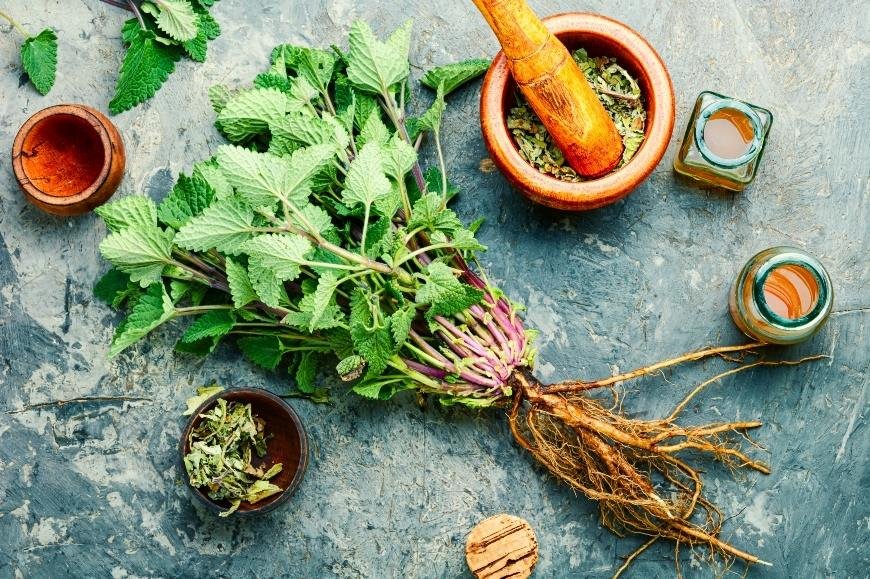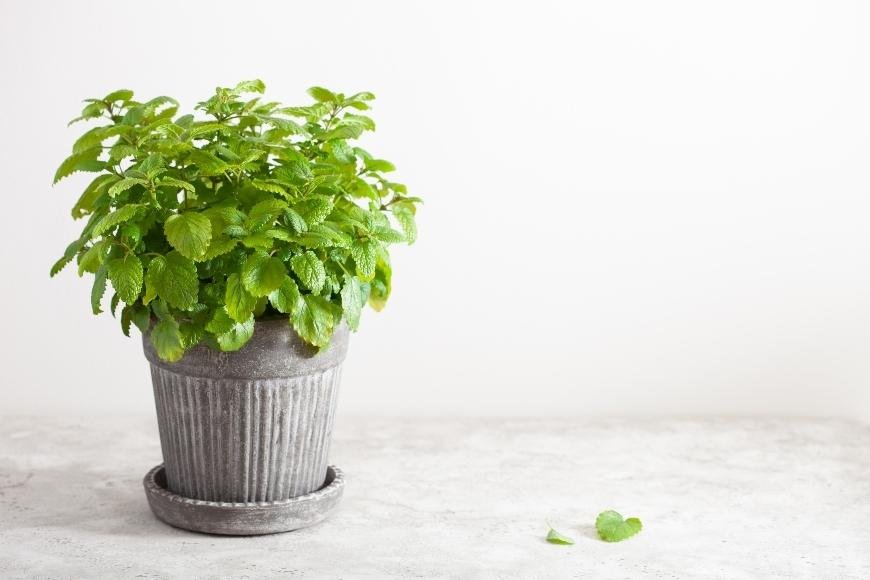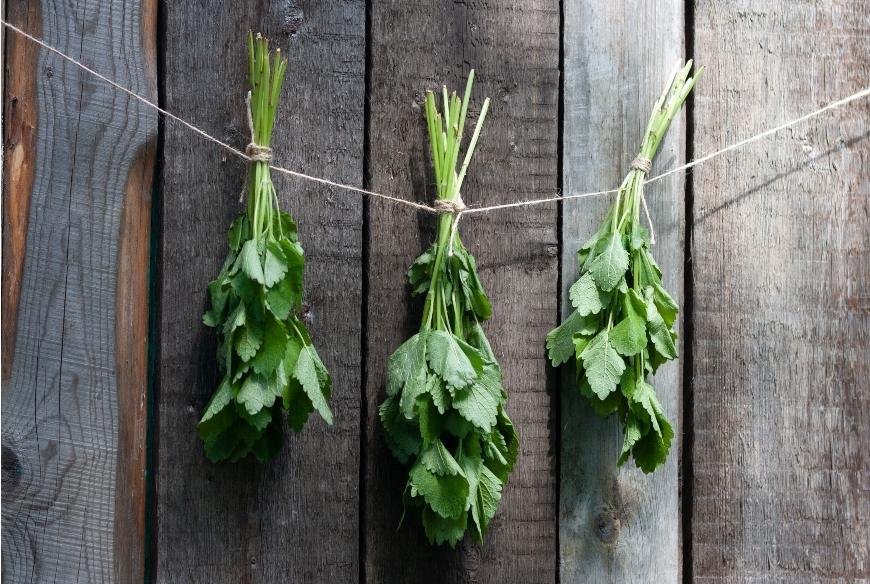How to Extract Lemon Balm
Learn how to extract Lemon Balm with our beginner's guide, covering benefits and step-by-step instructions for creating soothing extracts.

Are you curious about how to extract lemon balm and harness its numerous benefits? You've come to the right place. This post will investigate the means of obtaining lemon balm extract, also known as balm mint, to create powerful remedies for various health issues.
We'll start by discussing what exactly lemon balm extract is and then explore its numerous benefits. Next, we'll cover all the essential tools and ingredients needed for a successful extraction. Following that, we'll guide you through preparing your lemon balm plants and outline step-by-step instructions on making your very own extract.
Lastly, we will provide tips on storing your homemade extracts properly and troubleshooting common issues that may arise during the extraction process. By following our comprehensive guide on how to extract lemon balm, you can unlock this plant's full potential while enhancing your self-sufficiency skills in natural remedies.
Table of Contents:
- What is Lemon Balm Extract?
- A Few Common Uses of Lemon Balm Extract:
- What You Need to Make Lemon Balm Extract
- Preparing the Lemon Balm
- Making the Extract
- Storing Your Extract
- Troubleshooting Common Issues
- Frequently Asked Questions How to Extract Lemon Balm
- Conclusion
1. What is Lemon Balm Extract?

Lemon balm, also known as Melissa officinalis or balm mint, is a perennial herb belonging to the mint family. For centuries, this perennial herb from the mint family has been used for its calming effects and various health benefits. One of the most popular ways to harness these benefits is by creating a concentrated form called lemon balm extract. This extract can be found in different forms such as lemon balm essential oil, lemon balm oil, and even lemon balm supplements.
The primary reason people make an extract from this plant is that it allows them to experience its therapeutic properties more effectively than simply using the leaves or consuming it as tea. The extraction process concentrates the active compounds present in lemon balm, including phenolic compounds responsible for its antioxidant activity.
Research studies have shown that combining lemon balm with other herbs may enhance their overall effectiveness while providing additional health benefits. For example, when combined with valerian root or passionflower extracts, it may help reduce anxiety and promote relaxation.
A Few Common Uses of Lemon Balm Extract:
- Treating cold sores: Lemon balm cream applied directly on cold sores can help speed up healing time and alleviate discomfort.
- Promoting sleep: Drinking a cup of warm water infused with several drops of lemon b-essential oil before bedtime might improve sleep quality.
- Easing digestive issues: Consuming lemon-b essence diluted in water could potentially soothe gastrointestinal problems like bloating and indigestion.
- Skin care: Applying lemon balm oil mixed with a carrier oil on the skin may help alleviate irritation and redness caused by insect bites or other skin conditions.
People are eager to find out how they can create their own lemon balm extract, given its numerous potential uses. In this guide, we will walk you through the process step-by-step, ensuring you have all the information needed to create your very own potent lemon balm essence at home.
3. What You Need to Make Lemon Balm Extract
To make your own lemon balm extract, you'll need a few essential materials and tools. Gathering these items beforehand will ensure a smooth extraction process and help you create the perfect homemade remedy for relaxation and well-being.
Materials:
- Fresh or dried lemon balm leaves: The star ingredient of this project, fresh or dried lemon balm leaves can be harvested from your garden or purchased online at reputable sources.
- Solvent: Choose between alcohol (such as vodka) with at least 40% ABV (80 proof), vegetable glycerin, or apple cider vinegar as your solvent. Alcohol is the most effective option for extracting medicinal properties from the plant material but may not be suitable for everyone due to dietary restrictions.
- Glass jar with lid: A clean glass jar with an airtight lid is necessary to store your mixture during the extraction process. Mason jars work great.
Tools:
- Kitchen scale: To accurately measure out your ingredients, use a kitchen scale that measures in grams.
- Cutting board and knife: A cutting board and sharp knife are needed to chop up fresh lemon balm leaves if using them instead of dried ones.
- Fine mesh strainer: A fine mesh strainer will help separate the liquid extract from solid plant material after steeping .
- Cheesecloth: For extra filtration , wrap your strainer in a layer of cheesecloth to ensure no plant particles make their way into the final extract .
- Funnel and amber glass dropper bottles: A funnel will help you pour the finished extract into amber glass dropper bottles for easy storage and use. The dark color of these bottles protects your extract from light, which can degrade its potency over time.
With all materials and tools gathered, you're now ready to start preparing your lemon balm leaves for extraction. Now, let's proceed to the next step of preparing your lemon balm leaves for extraction.
To make lemon balm extract, you will need dried or fresh leaves of the plant, a mason jar and some alcohol. To begin preparing your lemon balm for extraction, it is important to properly clean and dry the leaves.
4. Preparing the Lemon Balm

Before you can make your lemon balm extract, it's essential to properly prepare the plant material. This will ensure that you get the most out of your extraction process and achieve a potent final product. Follow these steps to prepare your lemon balm:
A. Harvesting Fresh Lemon Balm
The first step in preparing lemon balm is harvesting fresh leaves from your plant. Ideally, you should harvest them early in the morning after any dew has evaporated but before direct sunlight hits them for too long as this can cause loss of volatile oils.
- Pick healthy leaves: Choose mature, green leaves without any signs of damage or disease.
- Rinse gently: Gently rinse off any dirt or debris with cool water and then pat dry using a clean towel or paper towels.
- Air-dry completely: Spread out rinsed leaves on a drying rack or tray lined with parchment paper and let air-dry until they are no longer damp to touch (this may take several hours).
B. Drying Your Leaves (Optional)
If you prefer working with dried lemon balm instead of fresh, follow these additional steps after cleaning and air-drying your harvested leaves:
- Oven method: Slightly preheat oven at its lowest temperature setting (usually around 150°F /65°C). Place prepared lemon balm on baking sheets lined with parchment paper ensuring there is enough space between each leaf. Place in the oven and leave the door slightly ajar to allow moisture to escape. Check regularly, turning leaves if needed until they are completely dry (this may take several hours).
- Dehydrator method: If you have access to a food dehydrator, follow your device's instructions for drying herbs.
C. Preparing Lemon Balm for Extraction
Once your lemon balm is clean and either air-dried or fully dried, it's time to prepare it for extraction:
- Chop fresh leaves: If using fresh lemon balm, chop the leaves into small pieces using a sharp knife or kitchen scissors. This will help release their natural oils during extraction.
- Powder dried leaves: For those who prefer working with dried material, use a mortar and pestle or an electric grinder (like one used for grinding flaxseeds) to grind your dried lemon balm into a fine powder.
You're now ready to proceed with making your extract. Follow our step-by-step guide in section 5 below on how to make lemon balm extract from prepared plant material.
5. Making the Extract
Using alcohol extraction, an effective and long-lasting method of obtaining extracts, we will now guide you through the process of making lemon balm extract from your prepared plant material. The extraction process we are utilizing is alcohol-based, which has been proven to be a reliable and effective method for producing potent and durable extracts.
A. Alcohol Extraction Method
- Gather your materials:
To begin with, ensure that you have all the necessary tools and ingredients for making lemon balm extract:- Dried and crushed lemon balm leaves (about 1 cup)
- High-proof alcohol like vodka or Everclear (at least 80 proof)
- A clean glass jar with a tight-fitting lid
- Cheesecloth or fine mesh strainer
- Amber dropper bottles for storage
- Note:
- Mixing the ingredients: Place your dried and crushed lemon balm leaves into the glass jar. Pour enough high-proof alcohol over them until they are completely submerged by about an inch above their surface.
- Seal and store: Put the lid on your jar, making sure it is tightly sealed. Store the jar in a shadowy, chill spot for no less than 4 weeks. This allows enough time for the alcohol to extract all of the beneficial compounds from lemon balm.
- Shake regularly: During this period, remember to shake your jar gently every day or two to help mix up its contents and promote better extraction.
- Strain and bottle: After 4 weeks have passed, use cheesecloth or a fine mesh strainer to separate the liquid from plant material. Squeeze out as much liquid as possible before discarding the solids.
Your homemade lemon balm extract is now ready. Pour it into amber dropper bottles for easy storage and dosing. Make sure you label each bottle with its contents and date of preparation so that you can keep track of their potency over time.
6. Storing Your Extract
Now that you've successfully made your lemon balm extract, it's essential to store it properly for maximum shelf life and potency. In this section, we'll cover the best practices for storing your extract and ensuring its effectiveness over time.
Airtight Containers
The first step in proper storage is choosing an appropriate container. Opt for amber glass bottles with dropper lids, as they protect the contents from light exposure while allowing easy access when needed. Ensure the bottle is free of moisture and dirt prior to filling it with your extract.
Labeling
To avoid confusion or accidental ingestion by others, always label your containers clearly with the following information:
- Name of the plant (Lemon Balm)
- Date of extraction
- Type of solvent used (e.g., alcohol or glycerin)
- Suggested dosage (if known)
Temperature Control & Light Exposure
Store your lemon balm extract in a cool, dark area away from direct sunlight and extreme temperature changes to prevent degradation. Avoid placing it near windows or other sources of direct sunlight. Additionally, try not to expose it to extreme temperature fluctuations - room temperature works best.
Note on Refrigeration:
If using an alcohol-based solvent for extraction, refrigeration isn't necessary since alcohol acts as a natural preservative. However, if you opted for glycerin-based extracts, refrigeration is recommended to extend shelf life and maintain potency.
Shelf Life
Lemon balm extracts made with alcohol typically have a longer shelf life, ranging from 2-5 years. Glycerin-based extracts, on the other hand, last for about 1-2 years when stored correctly. It is recommended to create small amounts of extract and replace it as necessary in order to guarantee potency.
By following these storage guidelines, you can enjoy the benefits of your homemade lemon balm extract for an extended period while maintaining its effectiveness. Remember that proper storage plays a crucial role in preserving the quality of any herbal product.
7. Troubleshooting Common Issues
While making lemon balm extract is generally a straightforward process, you may encounter some issues along the way. In this section, we will discuss common problems and provide solutions to help ensure your extraction goes smoothly.
Issue 1: Weak or Ineffective Extract
If you find that your finished extract lacks potency or doesn't seem effective, there could be several reasons for this:
- Poor-quality lemon balm: Ensure that you are using fresh, high-quality lemon balm leaves for optimal results. If feasible, cultivate your own herbs or get them from a reliable vendor.
- Inadequate steeping time: Make sure to let the mixture steep for at least two weeks in order to fully extract the beneficial compounds from the plant material.
- Diluted alcohol content: Using an alcohol with too low of a concentration can result in a weaker final product. Stick with vodka that has at least 40% ABV (80 proof) when making your extract.
Issue 2: Mold Growth During Extraction Process
Mold growth during extraction is rare but can occur if proper precautions aren't taken. To prevent mold formation on your lemon balm extract, follow these tips:
- Cleanliness matters: Thoroughly clean all equipment and containers before use by washing them with hot soapy water and rinsing well.
- Avoid moisture contamination: Ensure that no water gets into the jar while preparing the mixture as it can encourage mold growth. Dry any washed materials thoroughly before use.
Troubleshooting 3: Sediment in the Finished Extract
If you notice sediment at the bottom of your extract, it could be due to inadequate straining or filtering. To avoid this issue:
- Double strain: After steeping for two weeks, strain the mixture through a fine mesh sieve and then again through a coffee filter or cheesecloth to remove any remaining plant material.
Troubleshooting 4: Unpleasant Taste or Smell
Lemon balm extract should have a pleasant, lemony aroma and taste. If yours doesn't, consider these potential causes:
- Oxidation: Exposure to air can cause oxidation which may affect the flavor of your extract. Make sure to store your finished product in an airtight glass container.
By addressing these common issues during extraction, you'll be well on your way to creating high-quality lemon balm extracts that provide all their desired benefits.
Frequently Asked Questions How to Extract Lemon Balm
How do you extract lemon balm?
To extract lemon balm, first harvest fresh leaves and allow them to dry. Then, create a tincture by placing the dried leaves in a jar and covering them with high-proof alcohol. Seal the jar tightly and let it sit for 4-6 weeks, shaking occasionally. Finally, strain out the plant material using cheesecloth or a fine mesh strainer.
How do you extract oil from lemon balm leaves?
You can extract oil from lemon balm leaves through steam distillation or cold pressing methods. Steam distillation involves passing steam through the plant material to release essential oils that are then collected separately. Cold pressing requires grinding or crushing fresh leaves before applying pressure to squeeze out their natural oils.
Can you make lemon extract from lemon balm?
No, you cannot make true "lemon" extract from lemon balm, as they are different plants. Lemon extracts come from citrus fruits like lemons while lemon balms belong to the mint family but have a light citrusy scent due to its terpenes content.
Conclusion
Creating an extract from lemon balm can be done easily in the comfort of your own home, enabling you to customize its potency and reap all of its benefits. By following the steps outlined above, you'll have a powerful and beneficial extract ready to use whenever you need it. Creating your own extract from lemon balm gives you the advantage of being able to regulate how much of each element goes into it, thereby allowing for a greater potential to maximize its effects. So why not give extracting lemon balm a try today?


































































































































